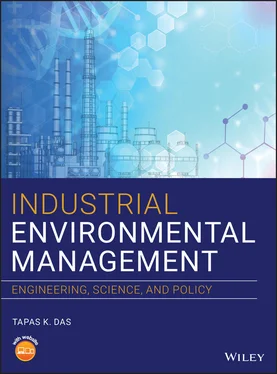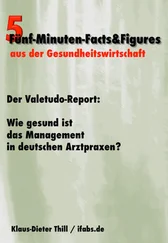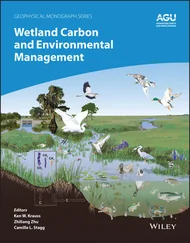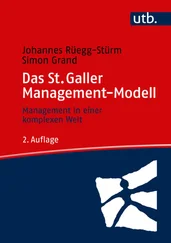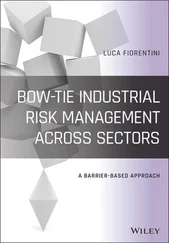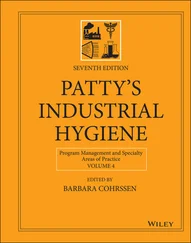Industries that buy process wastes are taking in nonvirgin material of a grade that may fall short of the purchasers' specification. This is an opportunity for materials blending. For example, plastics can be recycled to make a lumber‐like product, but the grade of such recycled products is not always acceptable as a direct input. If a contaminated waste flow is not of sufficient volume, however, blending in virgin plastics can bring both quality and volume up to manufacturing specifications.
Once the potential partners have been identified, the industrial cluster should be designed and developed. Kalundborg (Grann 1994) is an excellent example of a cluster that includes heavy industries, while Tsumeb's cluster is based primarily around food production and processing. Elsewhere in the world, industrial cluster is yet to be developed.
India and China are industrializing nations that have abundant and cheap supplies of coal, but burning it to generate electricity produces CO 2, SO x, and NO x. The key to sustainability for industrializing countries will therefore be development of industrial clusters that link energy, agriculture, and sewage treatment, in the fundamental format for Zero Emission communities. The most effective incentive to develop such clusters is economics, and, unlike conventional SO xand NO xtreatments, the system for the electron beam/ammonia conversation of these pollutant has a financial payback of 10–15 years. Section 9.2.3 treats this technology in more detail.
1.10.4 Develop Conversion Technologies
The easiest connections for industrial clusters are through a simple, direct waste exchange. The next easiest route is to develop an intermediary process that will take one industry's current waste stream, convert it to a usable form, and transfer it to a purchasing industry. Now we consider briefly the pivotal function of conversion technologies as illustrated by the problems encountered in the paper recycling industry as it works toward attaining Zero Emissions in the United States (see also Chapters 7and 9).
Paper recycling is quintessentially “green.” But current processes used to de‐ink paper remove only 70–80% of the ink particles, leaving recycled papers an unattractive gray. The wastes are a toxic mix of ink, short fibers, coating chemicals, and paper fillers that requires both primary and secondary treatment before disposal. De‐inking is both inefficient and expensive, and results in a product that is often higher priced and lower quality.
Under the auspices of ZD industries, a conversion technology is being developed that results in 100% removal of ink and 3 viable outputs. The recaptured ink could be reused in printing or for making pencils (as is already done with ink from photocopiers). The long fibers could be made into paper again or used in cardboard. The remaining sludgy mixture of short fibers and residues could be dried and used as acoustic insulation inside building walls or as ceiling tiles. The sludge could be used to make shock‐absorbent packaging such as egg cartons or replacements for corrugated cardboard.
The industrial cluster built around paper recycling thus includes recapturing ink, making new paper, and making building and packaging materials. Canada, Latvia, and Italy have tested this conversion technology, the steam explosion system. Many cities, states, and national governments, however, require that recycled paper be used in newspapers, and where these regulations are in force, a system that produces a grade of paper better than that needed by newspapers is not likely to be implemented.
So‐called designer wastes can serve as direct feedstock to another sector, or, if properly processed through a conversion technology, as processed feedstock. If the beer industry for example, used a sugar‐based cleanser instead of a caustic cleanser for its bottle‐washing process, the discharge water could serve as a direct feed to fish ponds, without needing any conversion. Yet other solutions will require installation assistance in adjusting or adapting material flows within the client's processes so that its waste output is in an acceptable form.
Building industrial clusters may involve working upstream within a facility to modify its production process so that the waste is produced in an acceptable “designer” form for conversion. Or, perhaps downstream, working with the purchaser industry, to help it modify its processes so that it can accept the converted waste.
This means that the involved engineering consultants must become familiar with the products and materials provided by suppliers to the producer and the materials needed by the purchaser of the designer wastes. All parties must have access to a database of specific information about the level of impurities acceptable in each final product. For example, companies that produce basic material inputs (such as plastics, oils, lubricants, and papers) deal in high volumes and some manufacturing processes can tolerate impurities. These companies are already experienced in their own refining processes and may also be knowledgeable about the manufacturing requirements of their customers, but their expertise may not extend to particular impurities present in the producer's waste stream. The database can provide the information necessary to complete the connections.
1.10.6 Reinvent Regulatory Policies
Experienced professionals are probably already aware of how government policies inadvertently inhibit creativity in reuse of wastes. These policies can also inhibit formation of effective industrial clusters. For example, breweries are regulated as an industry and the facilities are generally located in industrial areas. However, to make efficient use of their discharge water in aquaculture, breweries should be located in agricultural zones. Similarly, regulations aimed at providing a market for recycled newsprint need to be revised so that technologies that produce a better grade of paper can flourish – and allow more complete reuse of all the other by‐products associated with complete de‐inking.
Ironically, ZD goals are inhibited in the United States by regulations pursuant to the Resource Conservation and Recovery Act of 1976 (RCRA). Transferring “wastes” among the members of industrial clusters is often prohibited by RCRA because its regulatory net entangles all wastes, whether hazardous or not. Its broad scope has the unintended consequences of creating disincentives to invest in recovery technologies and blocking progress toward pollution prevention and recycling. RCRA waste classifications can put kinks in potential closed‐loop systems. Indeed, as Robert Herman (1989) put it, “the essence of the environmental crisis is not nearly so much bad actors as the whole, often contradictory structure of incentives in the economy.” Regulatory policies need to be reinvented to foster development of breakthrough conversion technologies and encourage cross‐sector markets for designer wastes.
1.11 Making the Transition
The shift toward a ZD culture, especially in a world dominated by industrial ecology, will see the development of new products, services, and industries. Our global economic system depends on extracting massive quantities of materials from the environment – after extraction and processing, the “annual accumulation of active materials embodied in durables, after some allowance for discard and demolition, is probably not more than six percent of the total. The other 94 percent is converted into waste residuals as fast as it is extracted” (Allen and Shonnard 2012; Allenby and Richards 1994; Ayres et al. 1996). In the United States, this means more than 10 T of “active” mass (excluding fresh water) per person each year.
Читать дальше
